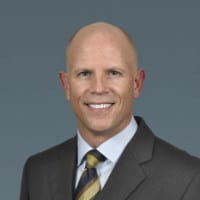Overuse Injuries in Youth Athletics
The pressure to excel in athletics mounts from an early age as children compete in their respective sports. Unfortunately, overuse injuries can occur as a result of the excessive strain children put on their bones, muscles and joints while competing, says Bryan L. Reuss, M.D., a board certified physician specializing in orthopaedic surgery and sports medicine at Orlando Orthopaedic Center (OOC). In his practice he sees these types of injuries every day; but what exactly is an overuse injury and what should you do if a patient has one?
 “Overuse injuries are the most prevalent injuries I see in children and many adults,” Reuss says. “They occur after consistent strains of the bones, muscles, joints or tendons during physical activity. Unlike the sharp, severe pain that is associated with acute injuries, the gradual aches associated with overuse injuries often go unnoticed or unmentioned before causing enough pain to seek medical attention.”
“Overuse injuries are the most prevalent injuries I see in children and many adults,” Reuss says. “They occur after consistent strains of the bones, muscles, joints or tendons during physical activity. Unlike the sharp, severe pain that is associated with acute injuries, the gradual aches associated with overuse injuries often go unnoticed or unmentioned before causing enough pain to seek medical attention.”
According to Reuss, the most common youth overuse injuries in the upper body include the shoulder and elbow. In the lower body, the knee, shins, Achilles tendon, and hip are common sites of the injuries.
“Some places, such as the shins and knee, hold potential for overuse injury no matter which sport is played. Other locations, however, are more closely associated with particular sports,” Reuss says. “Players of particular sports are more prone to certain injury locations; for instance, I see hip injuries more often in athletes who run track and shoulder injuries in baseball and softball players.”
And Reuss has seen plenty of sports injuries over the years. In addition to being fellowship trained in sports medicine and an active member of the American Orthopaedic Society for Sports Medicine, Reuss also serves as a physician for Cirque du Soleil, USA Rugby, 13 local area high school athletic programs, and the Arnold Palmer Invitational.
The STOP Sports Injuries Program (SSI) attributes the stress placed on youth to become exceptional at one particular sport as a contributing factor to the parallel between the rise of overuse injuries and the decrease in the age of those affected by them. In fact, SSI discourages this “specialization” until the child is a high school senior.
Reuss echoes the sentiment and agrees that the more variety that can be integrated into a child’s physical routine the better.
“It is common for youth to focus on one sport and put all their time and energy into that from an early age. You’ve got the kids who’ve been softball players since before they were in school, and they get to high school, and there’s, even more, pressure. This is a huge cause for concern regarding overuse injuries,” Reuss says. “If you’re placing an exceptional amount of tension on the same muscles every day, and you’re not giving those muscles a break, there is huge potential for overuse injuries to occur.”
However, this intense concentration on a particular sport is not the only means to cause an overuse injury.
“Another huge thing to keep in mind is technique. If a child has the wrong technique, he or she may be straining muscles without even realizing it,” he says. “Many overuse injuries I see in youth can be prevented. It’s important for adults to remember that pushing a child too hard can result in serious injury because they are not completely physically developed yet.”
Overuse injuries are also caused by jolts in the quantity of time spent working out or the intensity of those workouts according to SSI; for instance, if a player had been inactive due to a previous injury, he or she cannot jump back into their previous routine with the same vigor.
“I understand the impatience to get back into the game. There’s a ton of pressure to jump in as soon as possible, and some athletes worry that their injury will keep them out of the game altogether if they can’t get back in right away,” says Reuss. “But it’s more about developing a workout plan that will ease you back into it.”
These injuries, unlike acute injuries, can be prevented. Both SSI and Reuss place stress on listening to the body as a key factor in this.
“Once pain is detected, it’s crucial to seek medical attention,” says Reuss. “Whether you are just noticing pain after playing, or it is affecting both your game and your life outside of your sport, don’t hesitate to see a doctor.” He says it will only make recovery a longer process in the long run.
If a patient visits your office and is complaining of pain felt in their muscles, bones, and joints and cannot remember how the injury occurred, this is often a sign of an overuse injury. At this point, if rest, ice, and elevation have not helped the patient recover, it may be time to refer them to a sports medicine specialist. “These injuries can turn into something major if they aren’t treated at the right time; so if you’re unsure, it’s always better to see a physician with a sports medicine background to give their recommendations.”
Both Reuss and Orlando Orthopaedic Center recognize that ultimately learning about the cause of overuse injuries is a key factor in preventing them and through this education, they hope to curb these injuries in youth in the community.


